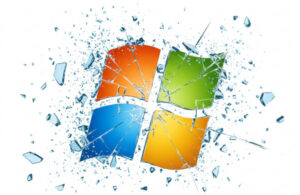Rob “drtorq” Reilly
Combining steampunk with Linux and single board computers like the Raspberry Pi automatically seems like an idea fraught with cool possibilities. So does the bigger picture, which Reilly hits on in this article.
I’ve been on a quest lately to add nano-Linux boards to steampunk projects. The effort has been pretty successful and it’s fun doing things like putting a Raspberry Pi into my “Conference Personality Identification Device,” which everyone recognizes as a name badge. The badge sports a 1.8-inch color TFT screen that plays little sepia toned promotional videos and an orbing tricolor LED “ozone tube.” I wear the badge to my conference tech talks and it tends to be a big hit.

But why combine STEAMpunk with Linux and why should you care?
Joining the awesome computing power of Linux with a tangible physical theme like steampunk is a great way to visualize a huge trend sweeping through our modern technology — the rise of the physical computing stack.
Many might remember the beginning of the Internet, the web, super-phones and data-driven everything. Now we have the maker movement and the so-called Internet of things. Look closely and you’ll see dozens of little self contained boards cropping up in the market, and most of them run on guess what?
Yup…Linux.
Developers, sysops, IT people and even the suits might want to investigate this subtle tsunami.
STEAMpunk is an excellent metaphor to dreaming, exploring and building. I throw it out there as a way to encourage lateral thinking.
What’s STEAMPunk?
Everybody knows steampunk when they see it. Wikipedia defines it as “a subgenre of science fiction or science fantasy that incorporates technology and aesthetic designs inspired by 19th century industrial steam-powered machinery.” The look might include lots of brass, copper, leather and gears. Many steampunkers dress in period clothing and take on imaginative personas with peculiar names.
I bill myself as Dr. Torq and am an American consultant, engineer, DIYer, hacker, writer, speaker and all-around Renaissance man. My tag line is “I invent gadgets that make people think, then write and speak about it.” Occasionally I wear a cool black top hat; I’m working on the vest, wing-collar shirt and trousers. A friend actually lives in a steampunk house and has a design firm that specializes in steampunk art and architectural projects. He’s sure taking it seriously.
Everybody also knows the educationally-related acronym STEM. That’s science, technology, engineering and math. Lately, instructors have seen the importance of including art in their curricula as well. That gives us STEAM. Those things are my life and I’ve had the good fortune to live through the Space, PC and Internet Ages. I read “2001: A Space Odyssey” when it came out and saw the Gemini and Apollo launches from my backyard. No surprise I ended up at Purdue.
Punk, on the other hand, usually is defined as someone who is a thug or a malcontent. An occasionally-used contemporary definition is to modify, enhance or change in a positive way. That’s the one I use, combined with STEAM to come up with my mindset: I use STEAM to punk physical things.
FOSS and Linux are the foundation of the modern computing stack and are the epitome of hacking and modding. Steampunkers do that too.
The physical computing stack
If you haven’t noticed, there are a ton of nano-sized Linux boards out in the wild these days, particularly ones based on ARM processors. Industry analysts have even started forecasting the end of Intel’s reign. I don’t know if I’d go that far, although ReCode reports that PC sales are down.
No doubt, ARM and other upstart processors are making a big push into everyday technology. Everybody has heard of the Raspberry Pi, which is now in it’s third major iteration. There’s also the Pine64 and the $9 CHIP computer. All are inexpensive, powerful and run Linux. They also have general purpose input/output (GPIO) pins. You can write programs that read input pins, do some calculations and change the state of those output pins.
They are the latest link in the chain I call the physical computing stack.
You’ve certainly heard of the LAMP (Linux, Apache, mySQL and PHP) stack. Add in GPIO capabilities and you have a physical computing stack. Of course, I extend the notion to include the electronic circuits needed to connect the Pi or CHIP computer to input and output devices, like push-buttons and servos, respectively. I also include the mechanical gadgets that incorporate all this cutting edge computing magic.
The world gets more complicated every day and the physical computing stack has a lot of moving parts. In the past companies compartmentalized talent into categories such as programmer, web developer, Linux system administrator and packaging engineer. Physical computing brings all of that together and creates a lot of opportunity for broad knowledge experts, who can buy these things off-the-shelf and then build completely new products.
Up until recently we never had the power of a fully self-contained Linux machine, with easy-to-use GPIO capabilities in a battery powered package roughly the size of a credit card. Take my conference badge, for example. It boots up headless and immediately initializes its color LCD screen. It next runs mplayer to display the little promo video on the display. After that, it runs a little Python script to “orb” the three-color LED “ozone tube.” From power up to functional badge takes about 30 seconds. The badge also has an EDImax USB Wi-Fi module and connects to local LANs. That gives ssh connectivity to the badge if I want to change the video or the orb rate of the ozone tube.
My badge is just the beginning. Imagine being able to kick off jobs that go out to the Internet and gather information that could affect the behavior of the badge. Or go the other direction and when something happens with the badge, like a GPS position change or pushing of a button, it sends the data to the cloud and notifications are sent out over email. There’s all kinds of crazy stuff you could do with a physical computing stack. By the way, both the CHIP and the Raspberry Pi 3 have on-board WiFi.
What next?
Applying your own spin
You certainly don’t have to go around stuffing nano-Linux boards into your steampunk projects. You may not even be a fan of steampunk. Don’t let that stop you.
Maybe you could wrap your project up in a space theme. Or put a nano-Linux board into some furniture. Or add a little board to your aquaponics system. It seems like there would be a ton of applications on the manufacturing floor, in a lab or in the office.
For me, the steampunk aesthetic promotes over-the-top, exaggerated emphasis on ideas and acts as a vehicle for drawing attention at conference talks, educational sessions and shows.
Steampunk, like Linux and FOSS, embraces a freedom of expression and spirit. Both groups collect offbeat, eccentric and opinionated doers. That’s all good and can be a badge of honor. Both are civilized and respectful, with decorum and style. Both are open, sharing and welcoming. Both are highly social.
So there you have it.
Time to start your own quest and use the STEAMpunk mindset, FOSS and the physical computing stack to build fantastic new projects nobody has ever even thought of before.
 Rob “drtorq” Reilly is an independent consultant, writer, and speaker specializing in Linux/OSS, physical computing, hardware hacking, tech media and the DIY/Maker movement. He provides a variety of engineering, business and special project services to individual clients and companies. As a tech media veteran, he has posted many articles at top-tier tech media and print outlets and has presented tech talks at OSCON and other industry venues. Read his Off-The-Shelf Hacker column on The New Stack and his blog, Dr. Troq. Contact him at doc@drtorq.com or 407-718-3274. Rob “drtorq” Reilly is an independent consultant, writer, and speaker specializing in Linux/OSS, physical computing, hardware hacking, tech media and the DIY/Maker movement. He provides a variety of engineering, business and special project services to individual clients and companies. As a tech media veteran, he has posted many articles at top-tier tech media and print outlets and has presented tech talks at OSCON and other industry venues. Read his Off-The-Shelf Hacker column on The New Stack and his blog, Dr. Troq. Contact him at doc@drtorq.com or 407-718-3274.
|










Small board computing is the future.
Linux boldly goes where Windows can not.
Fun read! One question: which options take the least amount of coal to run? I’m almost out of pocket space!